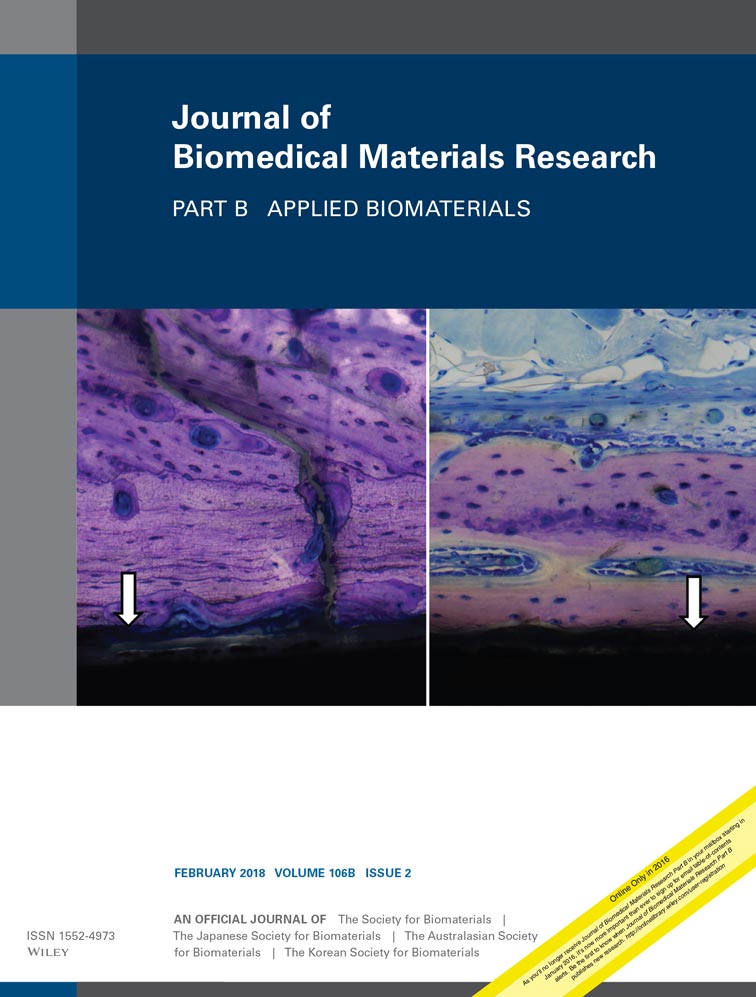Cytocompatibility assessment of Ti-Zr-Pd-Si-(Nb) alloys with low Young's modulus, increased hardness, and enhanced osteoblast differentiation for biomedical applications
This article was published online on 8 April 2017. An error was subsequently identified. This notice is included in the online and print versions to indicate that both have been corrected 19 April 2017.
Abstract
Ti-based alloys have increased importance for biomedical applications due to their excellent properties. In particular, the two recently developed TiZrPdSi(Nb) alloys, with a predominant β-Ti phase microstructure, have good mechanical properties, such as a relatively low Young's modulus and high hardness. In the present work, the cytocompatibility of these alloys was assessed using human osteoblast-like Saos-2 cells. Cells grown on the alloys showed larger spreading areas (more than twice) and higher vinculin content (nearly 40% increment) when compared with cells grown on glass control surfaces, indicating a better cell adhesion. Moreover, cell proliferation was 18% higher for cells growing on both alloys than for cells growing on glass and polystyrene control surfaces. Osteogenic differentiation was evaluated by quantifying the expression of four osteogenic genes (osteonectin, osteocalcin, osteopontin, and bone sialoprotein), the presence of three osteogenic proteins (alkaline phosphatase, collagen I, and osteocalcin) and the activity of alkaline phosphatase at different time-points. The results demonstrated that TiZrPdSi and TiZrPdSiNb alloys enhance osteoblast differentiation, and that cells grown on TiZrPdSiNb alloy present higher levels of some late osteogenic markers during the first week in culture. These results suggest that the TiZrPdSi(Nb) alloys can be considered as excellent candidates for orthopaedical uses. © 2017 Wiley Periodicals, Inc. J Biomed Mater Res Part B: Appl Biomater, 106B: 834–842, 2018.




